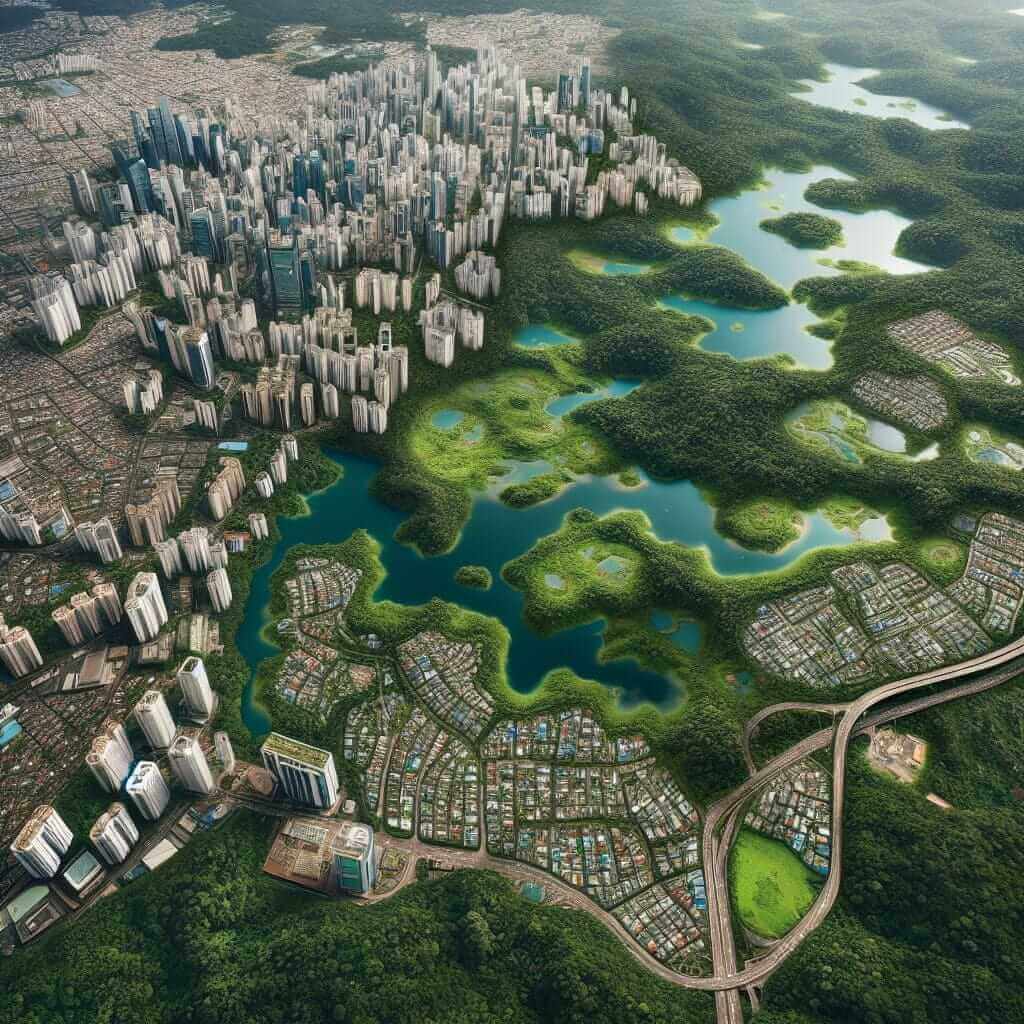Urbanization, the increasing shift of population from rural areas to cities, is a global phenomenon with far-reaching consequences. One area significantly affected by this trend is biodiversity – the variety of life on Earth. This article will delve into the effects of urbanization on biodiversity, providing insights and vocabulary helpful for IELTS Writing Task 2.
Understanding the Issue: Urbanization and Biodiversity in IELTS Writing
The IELTS exam frequently features topics related to environmental issues, and the impact of urbanization on biodiversity is a recurring theme. Let’s examine some potential IELTS Writing Task 2 questions on this subject:
1. “Urbanization is considered a major threat to biodiversity. What are the causes of this problem, and what measures can be taken to address it?”
2. “Some people argue that urban development and environmental conservation cannot coexist. To what extent do you agree or disagree?”
3. “Discuss the impact of urbanization on wildlife and suggest ways to mitigate its negative effects.”
These questions require a nuanced understanding of the relationship between urbanization and biodiversity. You should be able to discuss the causes and effects of the problem and offer viable solutions.
Sample Essay: Analyzing the Effects of Urban Sprawl
Let’s choose the first question from the list above and craft a model essay:
Question: “Urbanization is considered a major threat to biodiversity. What are the causes of this problem, and what measures can be taken to address it?”
Model Essay:
Urbanization, the increasing concentration of the human population in cities, has been identified as a significant threat to biodiversity. As cities expand, they encroach upon natural habitats, leading to a decline in species richness and abundance. This essay will analyze the primary causes of this problem and propose potential solutions to mitigate the negative impacts of urbanization on biodiversity.
One of the primary drivers of biodiversity loss due to urbanization is habitat destruction. Urban sprawl often results in the clearing of forests, grasslands, and wetlands to make way for residential, commercial, and industrial areas. This destruction fragments natural habitats, isolating populations of plant and animal species and disrupting their life cycles. For instance, the construction of roads and buildings can create barriers for animals searching for food, mates, and nesting sites, ultimately threatening their survival.
Furthermore, urbanization contributes to pollution, which further exacerbates the problem. Cities generate significant amounts of air, water, and noise pollution, all of which can have detrimental effects on biodiversity. Air pollution from vehicles and industrial activities can damage plant life and respiratory systems in animals. Similarly, water pollution from sewage and industrial discharge can contaminate waterways, harming aquatic species. Noise pollution from traffic and construction can disrupt animal communication, breeding patterns, and foraging behavior.
Addressing this pressing issue requires a multi-faceted approach. One crucial step is to implement sustainable urban planning strategies. This includes promoting compact city designs that minimize urban sprawl and encourage the preservation of green spaces within and around urban areas. Green belts, parks, and urban forests can provide refuge for wildlife, connect fragmented habitats, and improve air and water quality.
In addition to sustainable urban planning, it is essential to raise public awareness about the importance of biodiversity and the threats posed by urbanization. Educating citizens about the value of nature and encouraging them to adopt environmentally friendly practices, such as reducing their carbon footprint and supporting local conservation efforts, can contribute significantly to mitigating the negative impacts of urban development.
In conclusion, urbanization poses a significant threat to biodiversity, primarily through habitat destruction and pollution. By implementing sustainable urban planning strategies and raising public awareness, we can mitigate these negative impacts and create more harmonious coexistence between urban environments and the natural world.
(Word count: 332 words)

Writing Tips and Vocabulary
Here are some essential tips and vocabulary to remember when writing about urbanization and biodiversity:
- Structure: Follow a clear structure for your essay, including an introduction, body paragraphs, and a conclusion.
- Vocabulary:
- Urbanization: urban sprawl, population density, infrastructure development, urban planning
- Biodiversity: habitat loss, fragmentation, species richness, extinction, conservation, ecosystem services
- Impact: detrimental, exacerbate, mitigate, sustainable, coexist, harmonious
- Grammar: Use a variety of sentence structures and grammatical constructions. Pay attention to subject-verb agreement, articles, and prepositions.
- Examples: Provide specific examples to support your points, such as the names of endangered species or successful conservation initiatives.
Essential Vocabulary:
- Fragmentation (n.) /ˌfræɡmənˈteɪʃən/: The process of breaking up a habitat into smaller, isolated patches.
- Encroachment (n.) /ɪnˈkroʊtʃmənt/: Intrusion on a person’s territory, rights, etc.
- Habitat (n.) /ˈhæbɪtæt/: The natural home or environment of an animal, plant, or other organism.
- Species richness (n.) /ˈspiːʃiːz ˈrɪtʃnəs/: The number of different species present in a particular area.
- Mitigate (v.) /ˈmɪtɪɡeɪt/: To make something less severe, serious, or painful.
- Sustainable (adj.) /səˈsteɪnəbl/: Able to be maintained at a certain rate or level.
- Coexist (v.) /ˌkoʊɪɡˈzɪst/: To exist at the same time or in the same place.
- Detrimental (adj.) /ˌdɛtrɪˈmɛntl/: Tending to cause harm.
- Exacerbate (v.) /ɪɡˈzæsərbeɪt/: To make a problem, bad situation, or negative feeling worse.
- Harmonious (adj.) /hɑːrˈmoʊniəs/: Free from disagreement or conflict.
Conclusion
The impact of urbanization on biodiversity is a complex issue with significant implications for the future of our planet. By understanding the causes and effects of this problem and learning the relevant vocabulary and grammar, you can effectively address this topic in your IELTS Writing Task 2 and contribute to the global conversation on environmental conservation. Remember to explore other related topics, such as the effects of urban sprawl on environmental sustainability, the importance of wildlife corridors in preserving biodiversity, and the impact of urbanization on wildlife habitats, to broaden your understanding and writing skills.